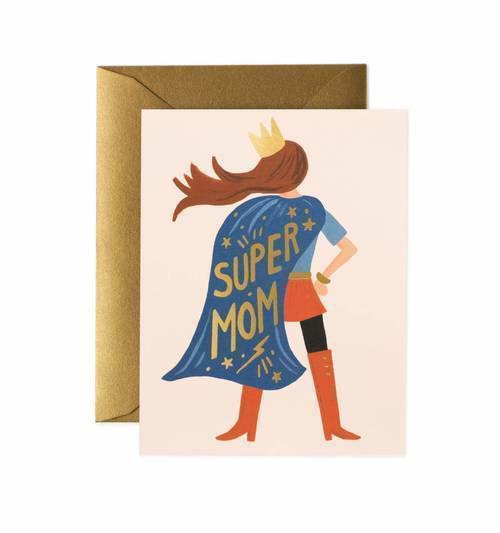Sustainable Businesses for Mamas
In April 2020, I made an optimistic (but in hindsight, dumb) prediction. I pondered aloud to a friend: “I wonder if the pandemic will be an opportunity for women’s careers. Now that everyone is working from home, maybe this will level the playing field and allow women more flexibility and opportunities for advancement.” Oh, silly, naive little me.
McKinsey’s recent Five Fifty report cited that 23% of women with children under 10 years old are considering leaving their job (compared to 13% of men). 23%!! And 17% are considering downshifting their career. Amazingly, but not surprisingly, the reasons are all actually quite solvable by employers.
So you know me. In this, I see again… an opportunity! An obligation even. For small businesses to lead the way, designing sustainable businesses for mamas. And frankly, for anyone who feels like “there must be a better way.”

These are practical suggestions that Ellevated Outcomes has already or are in the works. They’re things that I’ve been working on for awhile because they just felt like the right thing to do. They embody our values of abundance and inclusion. But real talk? Pieces will backfire, and I’ll be annoyed at myself. But I care about exercising our values IRL. As with everything we do, we embrace the philosophy of test, learn, and refine. So, you have a front row seat to see how they go, over the life of our company : )
1. Always present the opportunity.
I will keep this short, as I wrote about it at length for International Women’s Day. Here’s the gist: do not make assumptions on anyone’s behalf. If someone should be invited or included for an opportunity (be it for a job or simply a meeting), don’t overthink and decide on their behalf. Extend the invite. And this isn’t just for bosses. If you’re a bystander and observe that a colleague should be included or considered, speak up! “If you see something, say something.” Be an advocate for those (especially women and mamas) who are not in the room.
2. Invest in your employees’ future selves.
There are many ways to do this: from learning and training opportunities to financial ones. About 50% of small businesses offer a retirement plan, and most of the time, it’s a 401K (please don’t get me wrong: something is always better than nothing)! But for an employee to get that benefit, the onus is on them to contribute, and maybe the company will match. Which I can understand, because you want their responsibility and skin in the game. But what about single mothers who need every penny they earn? And people of color, who are likely to send money home, supporting their parents and extended family, again needing every bit of cash (Dorothy Brown)?
For this reason (and a few others having to do with equity), we offer a SEP IRA to our employees. I have to warn you: it can be a b**** to administer (I think I have a streamlined process down now – ha), but in my mind, the outward good outweighs the administrative bad.
In short, it mandates that the employer contributes to its employees’ retirement accounts; and it requires that everyone receives proportionally equal contributions. So in our company, everyone receives 5% of their salary: EO’s gift to our people’s future selves, as I like to say.
3. Reframe the idea of “flexible working,” embrace it, and structure it.
First on this point, I have to give credit where credit is due. I’d been playing around with a new employment model for a few months, then in the past couple weeks, 3 (extremely progressive!) male friends validated it. So here’s the theory I want to present: most of us grew up understanding that a career is a linear and upward climbing trajectory, until you retire in your mid 60s. Each step forward should be a step up on the proverbial ladder, with more responsibility, more time invested, and more money.
But why!?
That’s so black and white. So predictable. So… uninteresting.
Why shouldn’t a career have chutes and ladders? Times of intensity and times of ease? A little less worldly expectation and a little more choose your own adventure. To me, flexibility should mean time where one can prioritize life over work, then work over life, then back again without penalty.
One friend recently told me that his husband would happily take a 30% pay cut to work 30 hours a week instead of 60. While another friend just resigned cold-turkey from his 25 year career track to hit the pause button and reconsider what he wants to accomplish in the rest of his career. The expectations of businesses today are not sustainable. So how can we flip this around and make it a win-win for all?
In 2021 we introduced a variable career model at Ellevated Outcomes. As you probably know (or could guess), our most important role in the company is our Strategist position. These are the people who work one-on-one with clients in our Advisory Practice and frankly… do the hard work. But we also have many smaller-time positions; and there’s no reason that one of our Strategists has to carry a full client load.
For example, perhaps someone’s personal goal is to maximize their personal income for the next year, then chill a bit in 2022. (Or take care of kiddos – obviously, the opposite of chilling). They can carry a full load now and maximize comp, then lighten up next year. And then fill up their work capacity again when they’re feeling it. Or they can work a partial role and take everything they’re learning in this role and apply it to their own business or side hustle. We’ve designed our capacity, staffing, and compensation model for this. There’s no demotion, no judgment, no penalties for prioritizing life over work.
Which leads me to… the practical side of flexible working. Many people don’t know how to do it – or communicate expectations for it. “Flexible” does not mean that the employee can do whatever they want; and it doesn’t mean that the employer can do anything they want. If you want to embrace flexible working for your business, I suggest a few practical things.
Create anchors. In general, an employee should be able to work when they want/are able to, as long as the work gets done and gets done well (which means that your on-boarding and monthly employee check-ins need to be airtight). But as the employer, you must provide structure too. Remember: structure creates freedom.
For example, for the past eight months, Sarah has been our part-time Business Development Manager. Her EO days are Tuesday and Wednesday. And she doesn’t work “9-5” on those days; she manages her own business and certainly does other things too. As you know, honesty is important at our company, so it’s not like she hides it when she’s doing other work on those days. But guess what: no one cares because she’s EXECPTIONAL at her job. She uses the Tues and Wed structure to schedule her EO meetings, and we try to be respectful of scheduling things that need her brain on those days too.
Also, in our business we have two regular full-team meetings every single week: our Tuesday Learning Cafe and Friday Retrospective. This is another anchor for our team, where we can say, “It doesn’t matter when you get your work done, but you need to cement these 2 meetings into your schedule, each week.”
Lastly, if you’re the boss, be conscious of the example you’re setting. People follow the leader. If you tell people to take time off; but you don’t take it – or you constantly email while you’re out of the office, your people will assume that you expect the same from them. Demonstrate boundaries inside and out, so that your team feels empowered to do the same. (Using an OOO is a great tool).
In conclusion, here’s the perhaps-elephant-in-the-room: I’m not a biological mama, and I’m not pretending to be. But I love being a woman. And I love being a woman who tries to understand and help other women – like moms! It’s a privilege and a responsibility to provide work for other people. And for me, I don’t want them to just think of it as work. I want someone’s career to have meaning in their life– so that life and career are working together, not at odds.
If 2020 taught us anything, it’s that the way we’re working isn’t working. So join me, won’t you? Let’s model a new way of doing business. And doing life.
Happy Mother’s Day!


